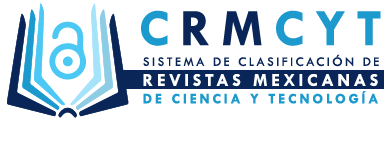Sobrecarga y calidad de vida en cuidadores de niños con cáncer
DOI:
https://doi.org/10.48777/ibnsina.v12i2.941Palabras clave:
cuidador primario, sobrecarga, calidad de vida, primary caregiver, burden, quality of lifeResumen
RESUMEN
En la actualidad, el cáncer es una patología que conlleva repercusiones físicas, mentales, sociales y espirituales en el paciente y su entorno más cercano. Según la Organización Panamericana para la Salud (2015), se estima que cada año se diagnostican en el mundo entre 175,000 y 250,000 nuevos casos de cáncer infantil. Sin embargo, muy probablemente estas cifras representan subestimaciones debido a la falta de registros fidedignos y variabilidad entre los reportes. En México se estima que existen anualmente entre cinco mil y seis mil casos nuevos de cáncer en menores de 18 años, entre los que destacan las leucemias que representan el 52 por ciento del total de los casos; linfomas el 10 por ciento y los tumores del sistema nervioso central el 10 por ciento cuya sobrevida estimada en México es del 56 por ciento del diagnóstico. A medida que esta enfermedad evoluciona, la autonomía del paciente va disminuyendo, por lo que es necesario ser cuidado. La inmunosupresión en ellos es más severa lo que limita las actividades cotidianas del paciente y lo obliga a permanecer en aislamiento social por la susceptibilidad a infecciones; en varias ocasiones, se le prescribe reposo absoluto por plaquetopenia, lo que le exige alimentarse, asearse, defecar y miccionar en la cama. La figura del cuidador adquiere un papel relevante en la realización de cuidados específicos, lo que puede conllevar al desarrollo de una sobrecarga que afecta de manera directa a su calidad de vida.
Palabras clave: cuidador primario, sobrecarga, calidad de vida.
SUMMARY
At present, cancer is a pathology that has physical, mental, social and spiritual repercussions on the patient and their closest environment. According to the Pan American Health Organization (2015), it is estimated that each year between 175,000 and 250,000 new cases of childhood cancer are diagnosed in the world. However, these figures most likely represent underestimates due to the lack of reliable records and variability between reports. In Mexico, it is estimated that there are annually between five thousand and six thousand new cases of cancer in children under 18 years of age; among which the leukemia’s stand out; which represent 52 percent of all cases; lymphomas 10 percent and tumors of the central nervous system 10 percent. The estimated survival in Mexico is 56 percent from diagnosis. As this disease evolves, the autonomy of the patient diminishes, having the need to be cared for. Immunosuppression in them is more severe, which limits the daily activities of the patient and forces him to remain in social isolation due to susceptibility to infections; on several occasions, she was prescribed complete rest for plateletpenia, requiring her to feed, wash, defecate, and urinate in bed. The figure of the caregiver acquires a relevant role in the performance of specific care, which can lead to the development of an overload that directly affects their quality of life.




